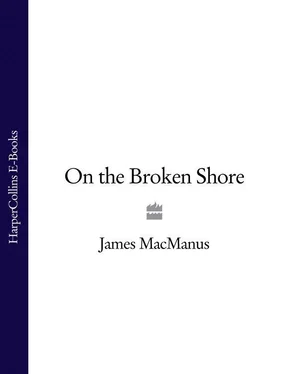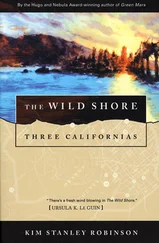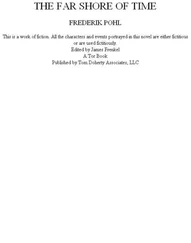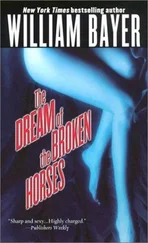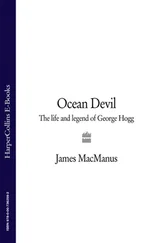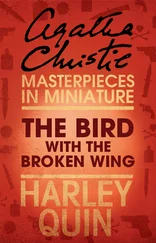If you sat them down and asked them why they wanted to study oceanography, the answers would be variants on a single theme: climate change. Fair enough, thought Kemp: the oceans and the weather are inextricably linked; but the answer missed the real point.
And if you asked them what they really, really wanted to do with their careers, the honest ones would admit that they would prefer to stay and work here at the Institute.
And why not?
Coldharbor, as Leo had tried to convince himself far too many times, was a great and beautiful place in which to learn and teach; a place in which to enjoy a comfortable lifestyle, raise a family and grow old gracefully.
And it was true. The Institute dominated what had once been a little fishing village and was now the main terminal for the ferries that ploughed to and from Martha’s Vineyard, fourteen times a day in winter, eighteen times in the summer. Apart from a handful of restaurants, bars and tourist souvenir shops clustered around the terminal, and several hundred holiday homes for the yachting crowd, the Institute pretty much was Coldharbor.
When the pilgrims first came to the Cape in the 1620s they found to their amazement that the local Wampanoag Indians were already expert whalers. Canoes made from birch branches and animal hide carried those fearless fishermen on hunting expeditions into the Atlantic armed only with stone-headed arrows and crude spears attached to short lines with wooden floats.
The Coldharbor Institute saw its researchers and scientists as the intellectual equivalent of those daring early fishermen: seekers after the secrets of the seven great oceans of the world, rather than the oil and blubber of the mighty cetaceans that swam in them.
Here the world’s leading marine biologists and scientists from every discipline of oceanography gathered to study the salinity and density of the oceans, the currents that swirled within their uncharted depths, the topography of the seabed, the effects of wind on the sea and wave on the shoreline.
Coldharbor also concerned itself with the behaviour of sea mammals: whales, dolphins and seals, the warm-blooded, oxygen-breathing creatures that inhabit our oceans. But the stars of the Institute’s repertoire were the deep-sea submersibles, known more prosaically as autonomous underwater vehicles, which could descend to depths of 17,000 feet and which, with the ocean-going vessels that supported and launched them, all operated from this small harbour on the Cape.
Leo Kemp was a part of this family of scientists with a solid body of published research to prove it. A family – that was how the Institute thought of itself: a community of researchers, educators and explorers, bound together by loyalty and a common cause – unravelling the secrets of the oceans and of the fish and the mammals that live in them.
It had been a long, blustery winter, followed by an unusually warm spring. Crossing the quad, Leo felt the warmth of early summer on his back. He looked at the line of modern buildings, all steel, chrome and glass, functional but not inelegant, that stretched along the ridge overlooking Vineyard Sound. Research centres, laboratories, aquaria, offices, libraries, lecture rooms; all the academic infrastructure to drive the institute forward on its mission.
And there was plenty of money to make it happen. The Institute’s president and chief executive, Tallulah Bonner, 55 years old and with a treacly Southern drawl that stretched all the way back to her home town of Atlanta, made sure of that. ‘Bonner’s bounty’, they called it.
Chief Executive Bonner understood big money. She knew that for every big private donation there was always a payback.
Every year at the annual financial review with the Board of Governors she made the same speech. Coldharbor was a private institute that received funds from government departments, especially the US Navy, she reminded them. But it relied mostly on private endowments from the wealthy.
‘Big donors are not putting a down payment on eternity when they give to us. Sure, they get their name up somewhere carved in wood or stone. And they’re not looking for gratitude, because the rich can buy that any day of the week. No, what they’re looking for is fulfilment . They want the assurance they’re making a contribution to the development of scientific knowledge on which the future of the human race depends. And, gentlemen, I make damn sure they understand that their generosity is critical to our mission.’
And she did. She knew exactly how to make the superwealthy feel good about giving.
‘The rich are like you and me when it comes to dying. They want to look back and feel they’ve done something with their life.’
At elegant fundraisers in New York and Boston, Tallulah Bonner knew better than to waffle on about the strategic importance of oceanography. Donors would always give for a good cause, and she gave them that cause through the simple but persuasive argument that the dawn of the space age should never detract from the study of marine science.
Let NASA spend trillions proving that there was no life on Mars, but spare a few hundred million for the study of what really mattered, the oceans that covered four-fifths of the earth’s surface.
Luckily the Pentagon had supported this thesis, or at least accepted that oceanography had an important if secondary role in mapping out future war scenarios. Submarines had proved themselves in the cold war era, and their territory – the canyons and valleys that shape the landscape of the ocean floor – was exactly where Coldharbor devoted the bulk of its research.
So while Houston and the space cowboys took the lion’s share of the money – and the glory – Coldharbor quietly took in enough funds to get on with what really mattered.
Trouble was, thought Leo, what really mattered on a warm morning, when the beaches were empty and the sea clean and fresh, was getting even a handful of students to listen to him.
He took the stairs to the second-floor lecture hall two at a time. His father, a retired doctor from Melbourne, had always told him that lifts were a greater health hazard than nicotine: ‘The elevator has contributed more to the high rate of heart attacks in America than cigarettes, alcohol and fatty foods put together.’ This oft-stated paternal thesis translated into equally frequent advice that not only should his son never take a lift, but that he should always eat porridge for breakfast.
His father was a living proof of the validity of his own advice, having reached the age of 92 without ever having taken a lift, or so he claimed. The fact that he continued to smoke and drink well in excess of the most liberal health guidelines merely confirmed the aged parent’s view about Mr Otis and the invention that had transformed urban skylines around the world.
There were thirty postgraduate students in the class but, as Leo had guessed, just twelve faces looked up from their iPods, BlackBerries, magazines and even a few copies of the Boston Globe as he walked in.
The tiered ranks of empty seating that rose before the podium seemed a perfect comment on the lecture subject: language and communication among mature pinnipeds.
Leo placed a sheaf of papers on the lecture stand. There was a reluctant rustle as the students stashed their papers, detached themselves from their earplugs and swung their attention to him.
He began with the traditional welcome, wishing them well in their studies. He then left the podium and walked up the staircase that divided the seating, speaking without notes. It was an old trick, but it always worked.
‘At the beginning of this course, I just want to say two things. First, we humans are defined not by what we know, but by what we do not know. The science that has brought you here, like all scientific disciplines, has no final frontiers, and it never will have.’
Читать дальше
